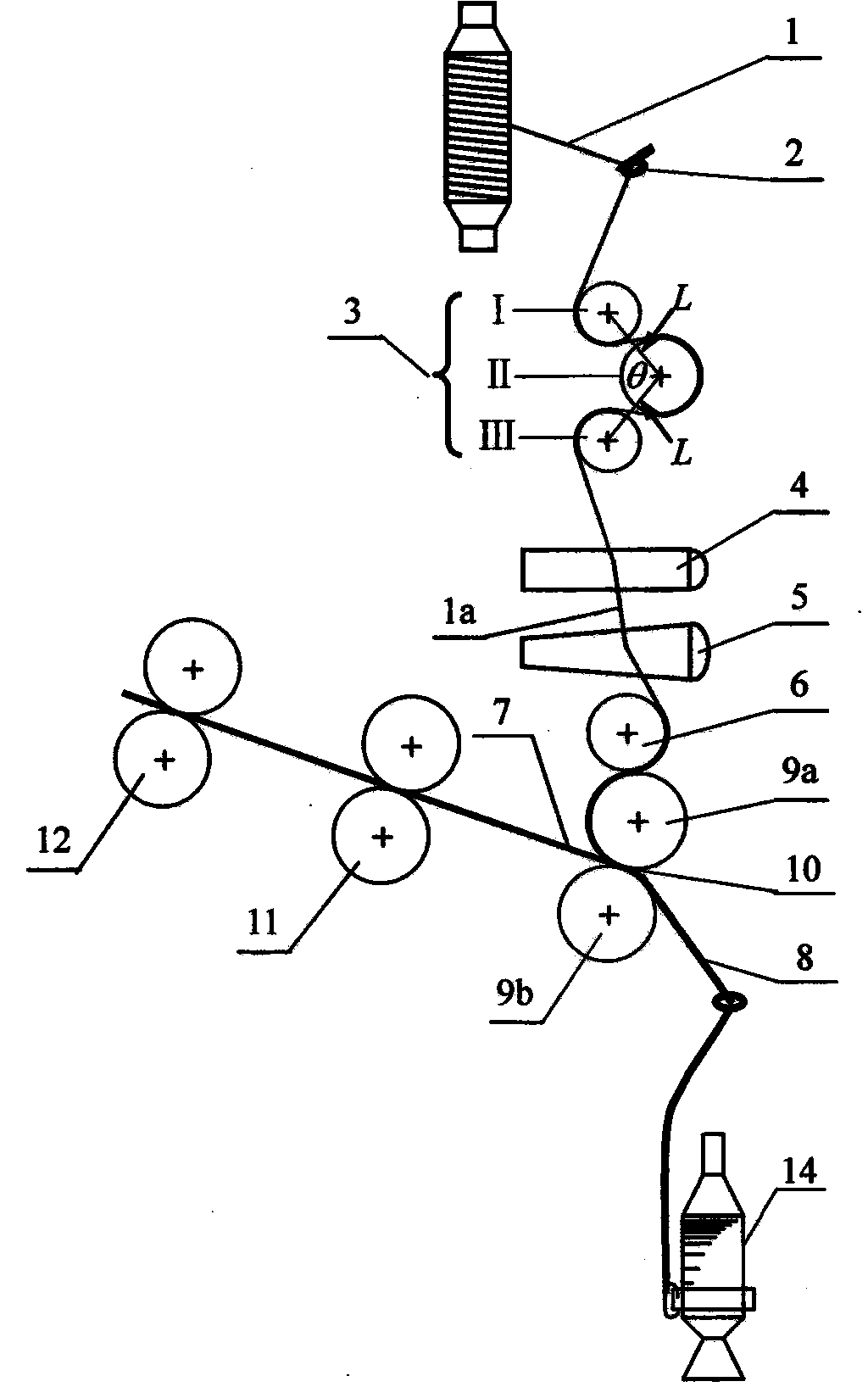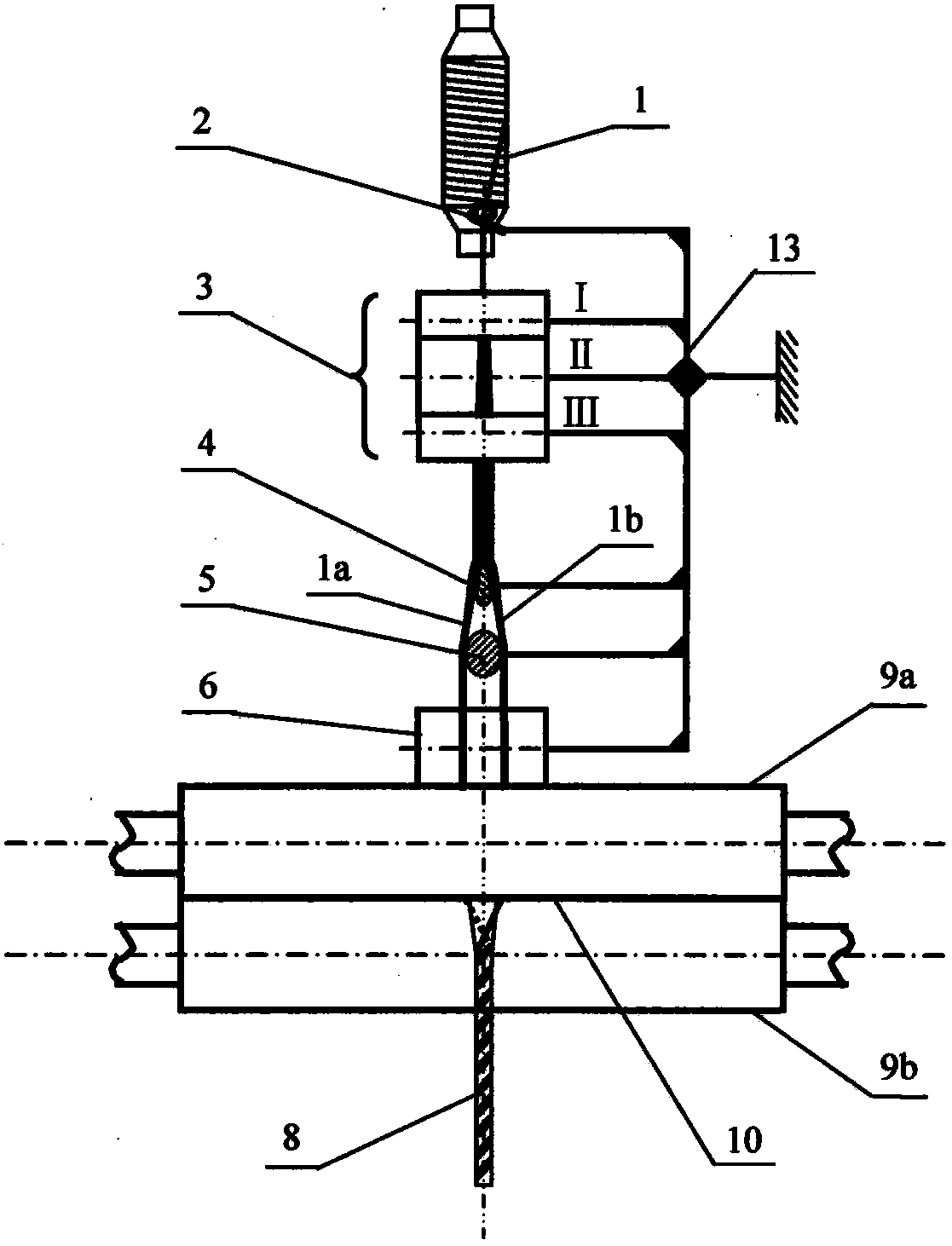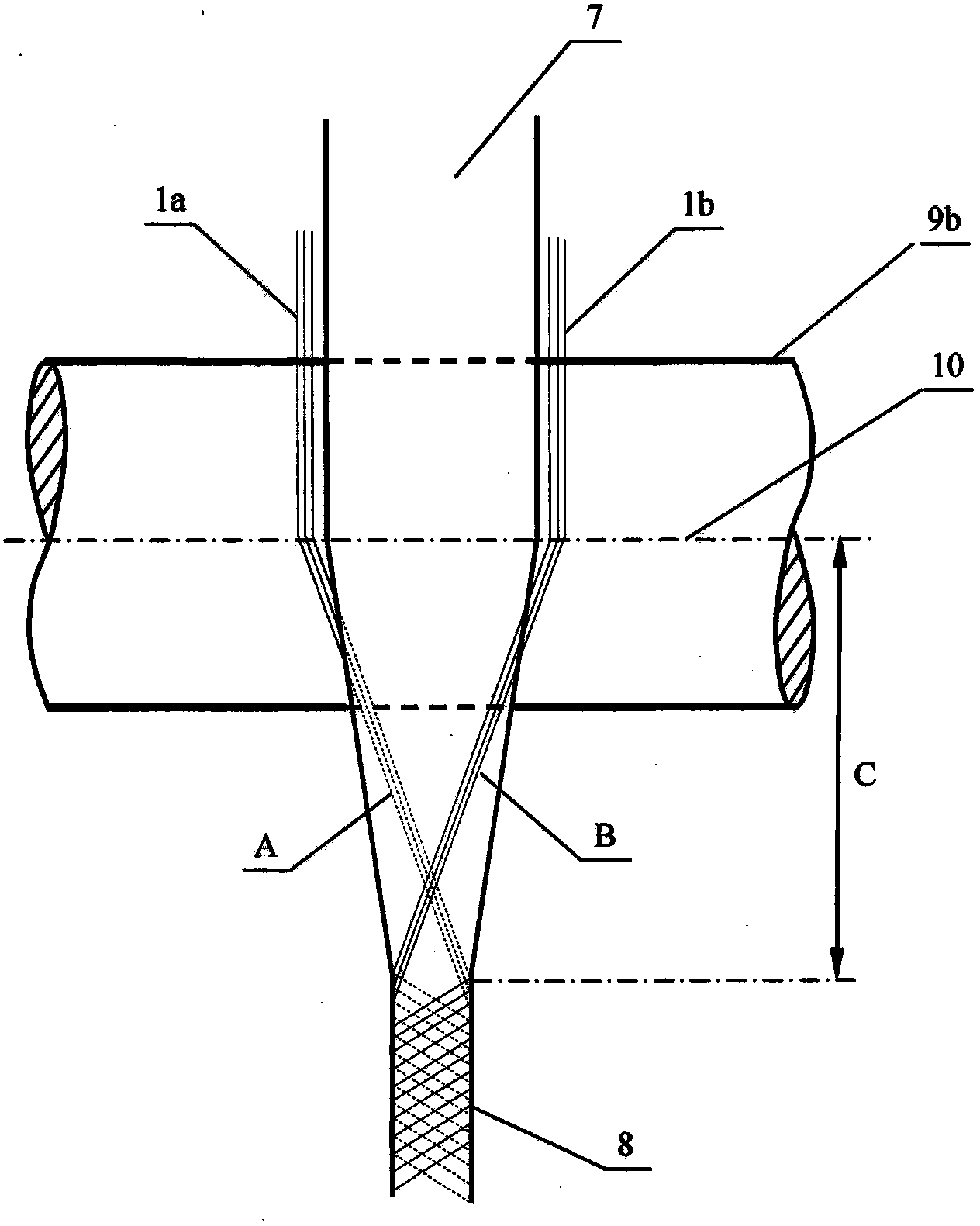Filament splitting constant-tension double-side limiting composite spinning device, method and application
A composite spinning and equal tension technology, applied in the direction of yarn, textiles and papermaking, etc., can solve the problems of ineffective use of short fibers, etc., and achieve the effects of excellent appearance and physical quality, reduced covering rate, and practical effect
- Summary
- Abstract
- Description
- Claims
- Application Information
AI Technical Summary
Problems solved by technology
Method used
Image
Examples
Embodiment 1
[0035] Embodiment 1: Spinning recycled cotton / viscose filament composite yarn
[0036] Select a tube of viscose filament and a tube of recycled cotton roving to carry out three-axis high-count yarn compound spinning, firstly unwind the roving tube and then use the cotton roving to pass through the drafting of back roller 12 and middle roller 11 Form recycled cotton short fiber strands and feed them into the front roller nip 10; at the same time, the viscose filaments are unwound from the filament tube, passed through the yarn guide hook 2 and wound on the three rollers of the flattening roller group 3 , then split through the splitting bar 5 and the spacing bar 5 to form the first splitting filament 1a and the second splitting filament 1b; The triaxial system of short fiber strands is synchronously fed into the front roller jaws 10 to form viscose filaments for dam-building and clamping protection on both sides of the recycled cotton strands; , under the action of twisting, a...
Embodiment 2
[0037] Embodiment 2: Spinning soil seed wool / nylon filament composite yarn
[0038] Select a tube of nylon filament and a tube of soil wool roving for three-axis ultra-fine yarn composite spinning, first unwind the soil wool roving from the roving tube and pass through the drafting of back roller 12 and middle roller 11 Form the short fiber strands 7 of soil species hair, and feed them into the front roller jaw 10; at the same time, the nylon filament is unwound from the filament tube, and wound on the three rollers of the flattening roller group 3 through the yarn guide hook 2 , then split through the splitting bar 4 and the distance bar 5 to form the first splitting filament 1a and the second splitting filament 1b; The triaxial system of short fiber strands is synchronously fed into the front roller jaws 10 to form the damming and clamping protection of the nylon filaments on both sides of the soil wool strands; Under the effect of twisting, twisting triangular region C is ...
Embodiment 3
[0039] Embodiment 3: Spinning recycled cashmere / silk composite yarn
[0040] Select a bobbin of silk and a bobbin of recycled cashmere roving to carry out three-axis ultra-fine yarn compound spinning, first unwind from the roving bobbin, and then use the cashmere roving to pass through the drafting of back roller 12 and middle roller 11 to form a loop. Feed the cashmere short fiber strands into the front roller nip 10; at the same time, unwind the silk from the filament tube, wind it on the three rollers of the flattening roller group 3 through the yarn guide hook 2, and then split it through Splitting bar 4 and spacer bar 5 form the first splitting long filament 1a and the second splitting long filament 1b; Then symmetrically wind around the warp guide roller 6, and be close to the front roller 9a and the recycled cashmere staple fiber bar three The shafting is synchronously fed into the front roller jaws 10 to form the damming and clamping protection for the silk on both sid...
PUM
 Login to View More
Login to View More Abstract
Description
Claims
Application Information
 Login to View More
Login to View More - R&D
- Intellectual Property
- Life Sciences
- Materials
- Tech Scout
- Unparalleled Data Quality
- Higher Quality Content
- 60% Fewer Hallucinations
Browse by: Latest US Patents, China's latest patents, Technical Efficacy Thesaurus, Application Domain, Technology Topic, Popular Technical Reports.
© 2025 PatSnap. All rights reserved.Legal|Privacy policy|Modern Slavery Act Transparency Statement|Sitemap|About US| Contact US: help@patsnap.com



